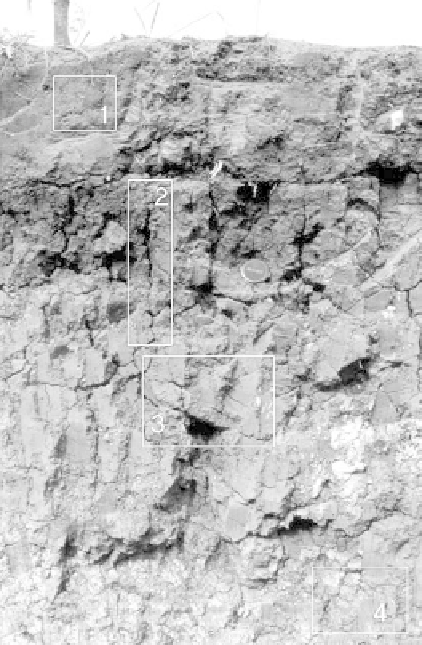Geoscience Reference
In-Depth Information
Fig. 6.2
Vertisol of Burundi.
Scale
: see lens cover.
Photo
: author. In boxes: zones where the
typical structures are clearly seen.
The third horizon (box 3) shows cracks oriented obliquely from the
horizontal. Their slope angle is 10° to 60° (Pal
et al
. 2009). The surfaces
are smooth but striated and slightly undulating (Fig. 6.3). They are
formed by movements within the soil and are called
slickensides
(slippage
faces). They play an essential role in the definition of the soil type: a
true Vertisol has them; soils of other taxa contain them only if they have
vertic properties
at least.
The lower horizon has no structure (massive) or a structure composed
of very coarse angular units (see box 4 in Fig. 6.2).
But these structures, described in the dry season for practical reasons
(soil unsaturated with water), more or less disappear in the humid
season (McGarry 1996).

